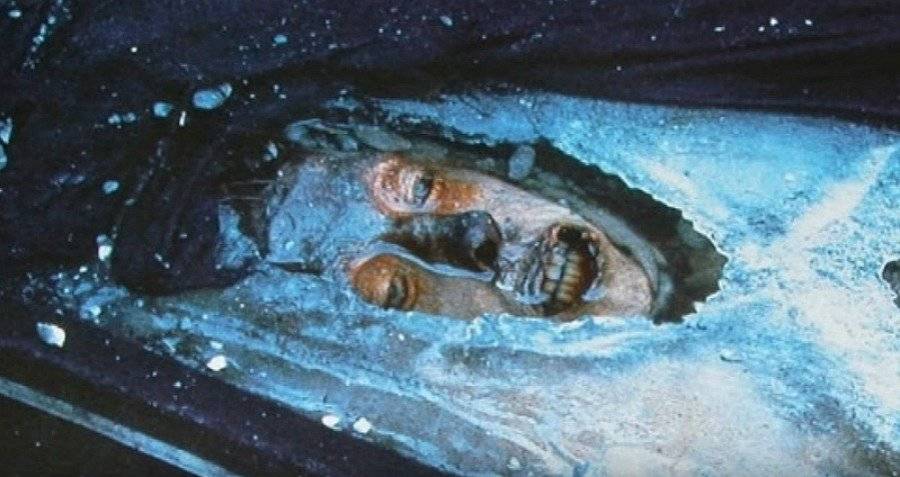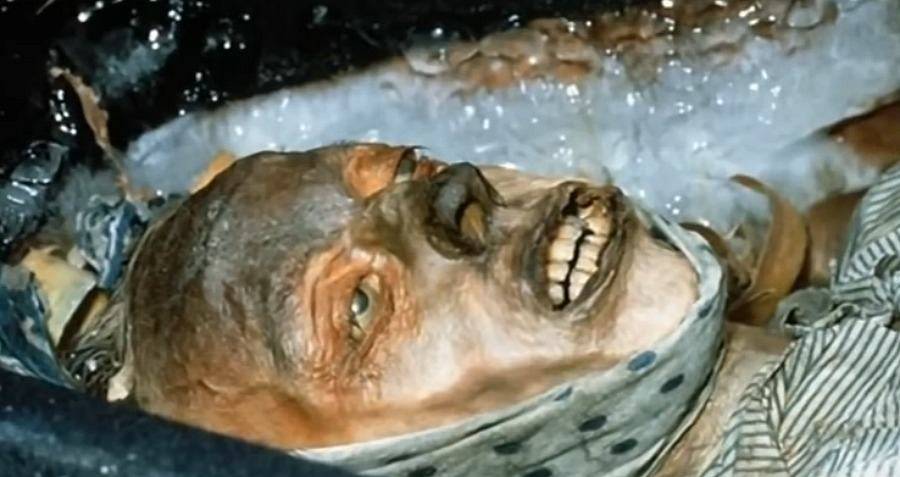New Study Sheds Light On Infamously Mysterious 19th-Century Cannibal Shipwreck
Title : New Study Sheds Light On Infamously Mysterious 19th-Century Cannibal Shipwreck
Link : New Study Sheds Light On Infamously Mysterious 19th-Century Cannibal Shipwreck

Body of John Torrington, crew member on the Franklin Expedition, found perfectly preserved in the Arctic ice in 1984.
The cause of death for all 128 crew members on the Franklin Expedition has long baffled archaeologists, but a new study brings them one step closer to finding the truth.
New research into the infamous and deadly Franklin Expedition shipwreck is shining light on how the 128 crewmen lost their lives more than 170 years ago.
A new study published on Aug. 23 in PLOS One revealed that lead poisoning, one of the previously and most popularly believed causes, did not play a pivotal role in the deaths of the sailors. Over the years a few discoveries have helped researchers to begin to piece together how the crew members may have met their untimely ends, however much of this fateful voyage remains unknown.
Background On The Franklin Expedition
In the Summer of 1845, two British ships, the HMS Erebus and HMS Terror, left Greenhithe, England for North America hoping to find the fabled Northwest Passage. Led by experienced explorer Sir John Franklin, the two ships and the 134 men were known as the Franklin Expedition.

Portraits of Arctic explorer John Franklin and his crew, circa 1845.
They began their journey stocked with three years’ worth of provisions for the team, however, in spite of their preparation, the ships’ voyage would prove fatal.
Clues Following The Franklin Expedition Shipwreck
A few months into the journey some of the men were discharged and sent home on sick leave. Exactly what happened to the remaining men still remains a mystery almost 175 years later.
The ship eventually stranded in ice in Victoria Sound, located in the mid-Canadian Arctic, and the crew members all eventually perished.
Some clues were found shortly following the disaster. In 1850, three graves of Franklin Expedition sailors were found and in 1854 Scottish explorer John Rae met Inuit residents who possessed some items that belonged to members of the crew. They also informed Rae of piles of human bones found in the area, which lead to rumors that the Franklin men probably turned to cannibalism in their desperate final days.

John Franklin.
Perhaps the most groundbreaking find in the case of the Franklin Expedition was the discovery of the exceptionally well-preserved crew member, John Torrington.
Found in 1984, Torrington’s perfectly mummified body was examined for clues. After analyzing bone and tissue samples they found that fatal levels of lead were in his system, possibly due to the crews poorly canned food supply.
According to Gizmodo, previous studies of bone, hair and tissue samples from the recovered bodies of the ships’ crew members revealed that they died from a large range of causes, but lead poisoning, in particular, seemed to be one of the top causes.

Body of John Torrington, crew member on the Franklin Expedition, found perfectly preserved in the Arctic ice in 1984.
New Findings Disprove Past Hypotheses
However, the recently published study has proven that this long-believed theory is mostly false. The team of researchers formed three hypotheses to test the lead poisoning theory.
The three hypothesis all posited that if lead poisoning truly was the main cause of death, then those sailors who lived longer would have larger amounts of lead in their systems, bones, tissue, and in in generally higher amounts than other sailors of that time, than those on the expedition who died sooner.
In order to test this, researchers used high tech X-ray image scans of the bones and found that the levels of lead in them did not ultimately support the first and third hypotheses, and only partially supported the second. Therefore, lead poisoning cannot be confidently considered the main cause of death in the Franklin Expedition sailors.
Tamara Varney, a member of Lakehead University’s anthropology department and part of the study’s research team, told CBC News that even though the second theory had some support, it was not definite. Varney reported:
“…It wasn’t really consistent. There were bone structure that near the time of death that definitely showed lead exposure. But then, there was an equal number that didn’t show lead exposure. So even that doesn’t completely support the idea that they were absorbing a lot of lead toward the end of their lives.”
But even though lead poisoning has been ruled out, researchers still aren’t positive as to what did kill those remaining sailors.
“I would suspect that their problems probably multiplied as time went by,” Varney told CBC. “Their food would have been limited, so they would have been starving. They would have had nutritional deficiencies. And any health problems individuals would have had going into the expedition that maybe weren’t a problem at the time, I imagine as time when on those would have become more magnified and manifest.”
Researchers are slowly inching towards finding an answer about how the members of the Franklin Expedition lost their lives, but for now, the deaths of the 128 men remains shrouded in mystery, and we’ll stay tuned for more info.
New Study Sheds Light On Infamously Mysterious 19th-Century Cannibal Shipwreck
Enough news articles New Study Sheds Light On Infamously Mysterious 19th-Century Cannibal Shipwreck this time, hopefully can benefit for you all. Well, see you in other article postings.
New Study Sheds Light On Infamously Mysterious 19th-Century Cannibal Shipwreck
You are now reading the article New Study Sheds Light On Infamously Mysterious 19th-Century Cannibal Shipwreck with the link address https://randomfindtruth.blogspot.com/2018/08/new-study-sheds-light-on-infamously.html